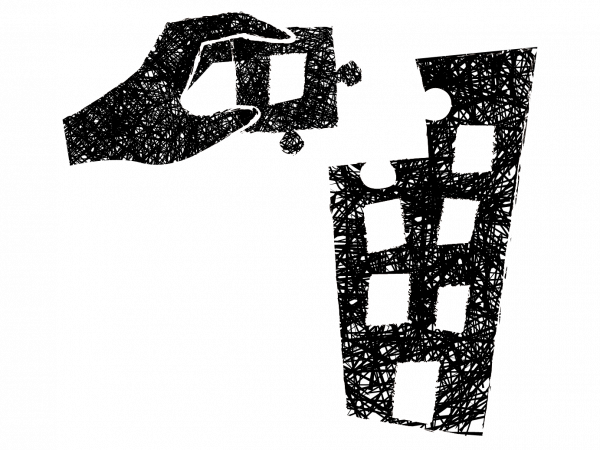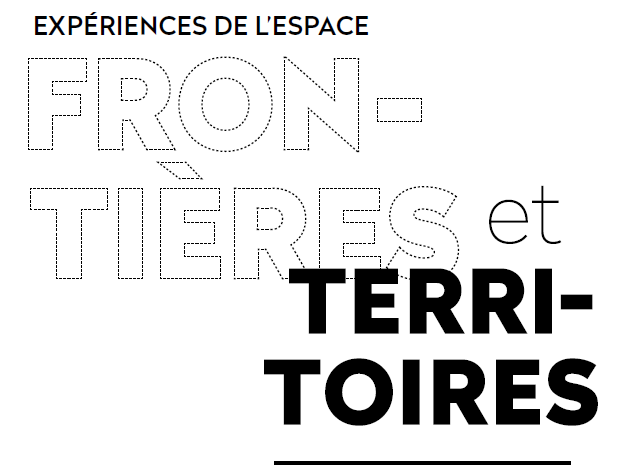- Home
- EN
- Our impact
- ProspeKtive
- Borders and territories

Borders and territories
March 2020
Expert
Marc Bertier, Workplace consultant, deciphers the relationship between the office building and its users
The relationship between the tertiary building and its users is special. First, because of the variety of occupancy statuses: ownership, long-term rental (3-6-9 year lease), short-term rental (sublet, business center, coworking); then because the term user can designate several stakeholders: a real estate department, managers or employees, the latter being the end users.

The status influences the level of investment in the development of spaces; the diversity of users multiplies points of view on what should be done. There is thus a problematic of the occupation of space and the associated territorial issues.
The occupancy status of tenants in social housing has some similarities with that of end users of tertiary buildings: both use the space without, however, having complete control over it. An intermediary (the politician and / or the lessor in social housing; the owner, managers and / or real estate management in the tertiary sector) has power over the space and decides on the functions, methods of allocation and rules of use. To access the space, the user must comply. Once installed, it has great power due to its very presence. In the social housing, the lessor has the obligation to offer an alternative solution to recover the home. It offers relocation that the end user may or may not accept. Faced with a refusal, he will have to choose: give in or stand firm and carry out his project. The balance of power is quite similar in the tertiary sector.
A territory is, here, a contained space, delimited by tangible borders and having one or more entrances.
The territory of the intermediary (real estate management, management, etc.) is a site or a building that is part of a real estate portfolio. Entries are collective and generally few in number. Many users choose to have only two entrances to simplify flow management and facilitate site security (a public entrance, for employees and visitors; a technical entrance, for logistics flows which should be as discreet as possible. , unless otherwise agreed). The territory of the end user is more blurred. If he has an assigned workstation, this will be his home territory, whether in an open or closed, shared or individual space. It will be completed by all the spaces usually used: team space, coffee area, meeting rooms, etc. If the workstations are not allocated, the territory will be marked by uses. It will be defined by the places where the user has his habits. The boundaries will be more blurred and specific to each. They will (or will not be) materialized and will vary over time.
In architecture, entry responds to different challenges. First of all, through the care taken in its design, it stages the size of the volumes and the way in which they are connected to other spaces. The entrance is a place for storytelling: highlighting the brand, its history and its products. Branding, design and art are used to tell the story of the company. The entrance is also a place of experience and sociability. It is the first point of contact with the outside world, customers, partners, talents, etc. Key events of the experience take place there: registration, waiting, welcome, entering the premises, etc. Space functions, digital equipment and postures combine to create a unique and personalized welcome.
The company lobby is also a place of control where visitors' intentions are ascertained. This should be as discreet as possible so as not to disrupt the immersion in the corporate world. In multi-occupancy buildings, this function will take precedence over the reception experience, which will then become more neutral, with the immersion occurring later. Entrances to coworking spaces are often treated in a more spectacular way to generate a wow effect. The design is generally neat and the coworking codes are used to appeal to the user. Once the airlock has been crossed, to reach their destination, the visitor or employee will cross different spaces: stairs or elevators, corridors and landings, landing doors and platforms. In coworkings and multi-occupancy buildings, these spaces are like extensions of the hall leading to work areas. Dealing with this continuity in single-occupancy buildings requires solving a particular situation: the setting up of real estate operations means that common spaces are often designed by the building architect, while workspaces are handled by the designer of the building. the user. If in some cases the two actors work together, most of the time their creations overlap. The single occupant will therefore have the challenge of aligning the expectations of multiple stakeholders to achieve a coherent space. This exercise could be made even more complex depending on the classification of the spaces: if the building is high-rise or public buildings, certain materials cannot be used and the interior layout will be constrained.
The hall and its extensions into the common areas constitute a filter between the exterior and interior worlds. Indeed, tertiary buildings are like a vertical and horizontal accumulation of compartments whose surface is regulated. The 12 meter deep compartments usually have a single access door which then becomes the entrance. On the other hand, the 18-meter-deep compartments generally have two access doors to allow dual circulation. In this case, a study of the flows will be necessary to determine the positioning of the entrance. Finally, there are dead-end or crossed compartments. Should we create a universe, with its entry, by compartment? By succession of compartments? By floor? The solution will depend on the morphology of the building, the organizational and functional constraints of the company (what links make sense?) And its ambitions (transversality, flexibility, team spirit, etc.)
The three major challenges of the entrances are representation, sociability and safety. In housing, entrances also meet a practical need. This is the place where you put your things (coat, bag, etc.) when arriving; where we change (shoes, even clothes); and where there are also a number of useful objects (sticky notes, storage compartments and others). In the office, this is the place where you will leave your coat and personal belongings (backpacks, handbags, sports bags, etc.) and in certain professions, put on professional attire. A place to store visitors' belongings. In open offices, these uses and needs are important and become essential in flex office environments. In this case, the entrance to the stage performs this function of an airlock between the outside world and the symbolic place of work; you get ready to work there, either by changing clothes or by saying hello to your peers. The entrance to the workspace should therefore be a place in its own right with a specific layout. This is where you enter the professional world, where you can safely leave your personal belongings and, finally, where you can meet. The entry can also be user-friendly and reflect business specifics. It must fit into the flow of the platforms and be extended by additional uses. It can therefore integrate or be located near a support space (printer, supplies, mail, etc.), storage areas, meeting rooms, reception rooms, corporate working space, etc. Located after the entrance to the building, the entrance to the workspace is a key point in the journey of the various users.
Release date: March 2020


